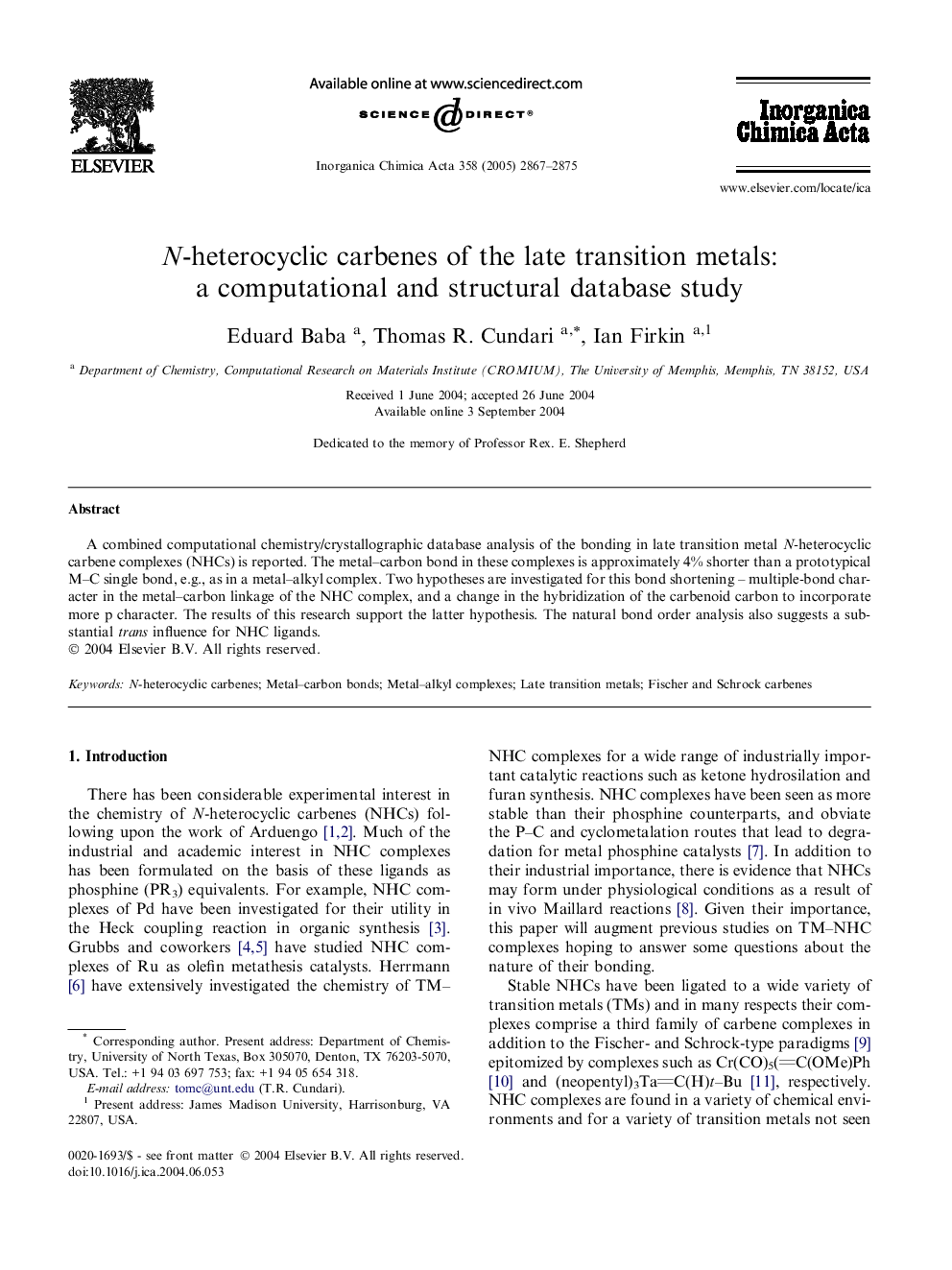| Article ID | Journal | Published Year | Pages | File Type |
|---|---|---|---|---|
| 1311041 | Inorganica Chimica Acta | 2005 | 9 Pages |
A combined computational chemistry/crystallographic database analysis of the bonding in late transition metal N-heterocyclic carbene complexes (NHCs) is reported. The metal–carbon bond in these complexes is approximately 4% shorter than a prototypical M–C single bond, e.g., as in a metal–alkyl complex. Two hypotheses are investigated for this bond shortening – multiple-bond character in the metal–carbon linkage of the NHC complex, and a change in the hybridization of the carbenoid carbon to incorporate more p character. The results of this research support the latter hypothesis. The natural bond order analysis also suggests a substantial trans influence for NHC ligands.
Graphical abstractA combined computational chemistry/crystallographic database analysis of the bonding in late transition metal N-heterocyclic carbene complexes is reported. The metal–carbon bond in these complexes is approximately 4% shorter than a prototypical M–C single bond, e.g., as in a metal–alkyl complex. The results of this research support a change in the hybridization of the carbenoid carbon to incorporate more p character, and not metal–carbon multiple bonding, as the cause of the bond shortening.Figure optionsDownload full-size imageDownload as PowerPoint slide
